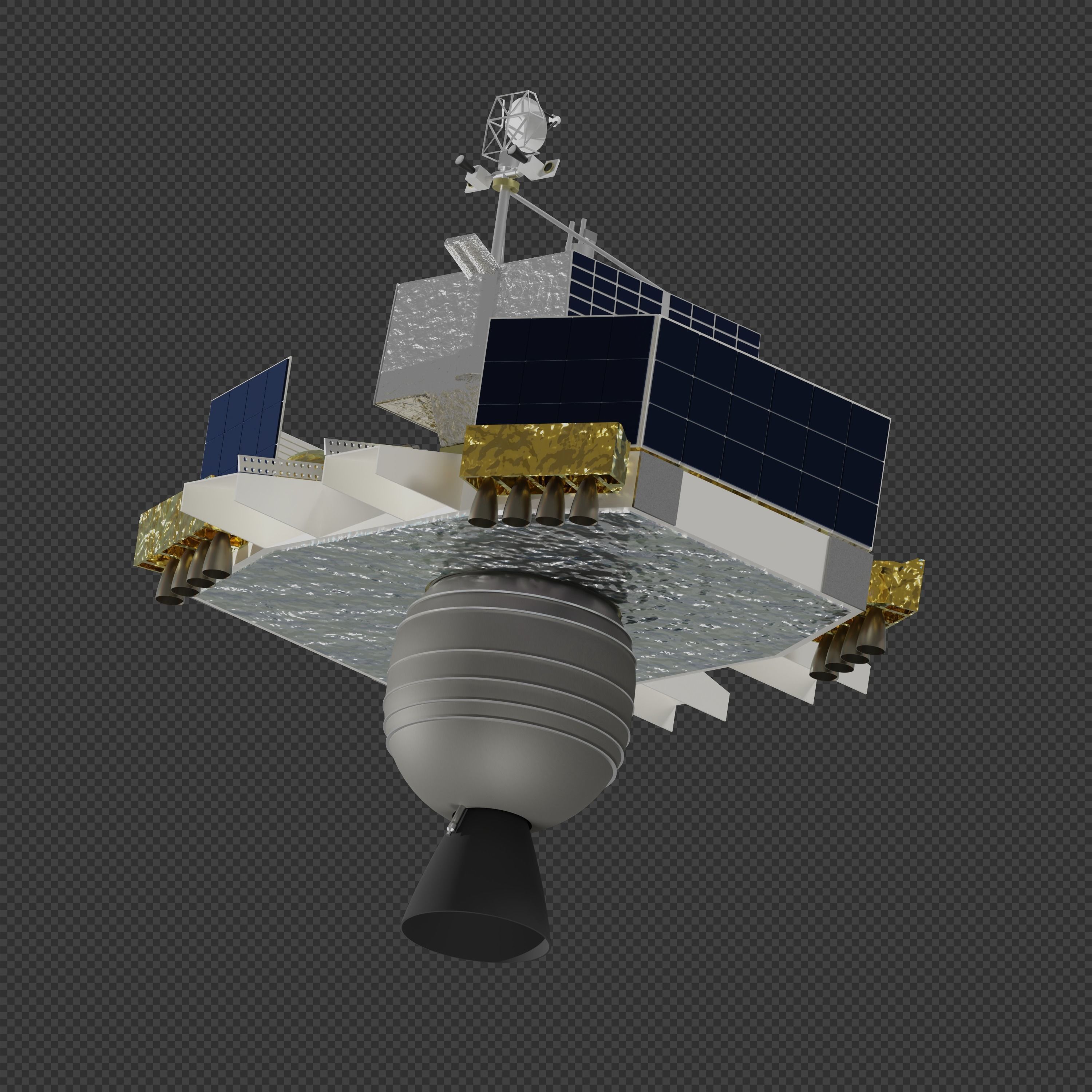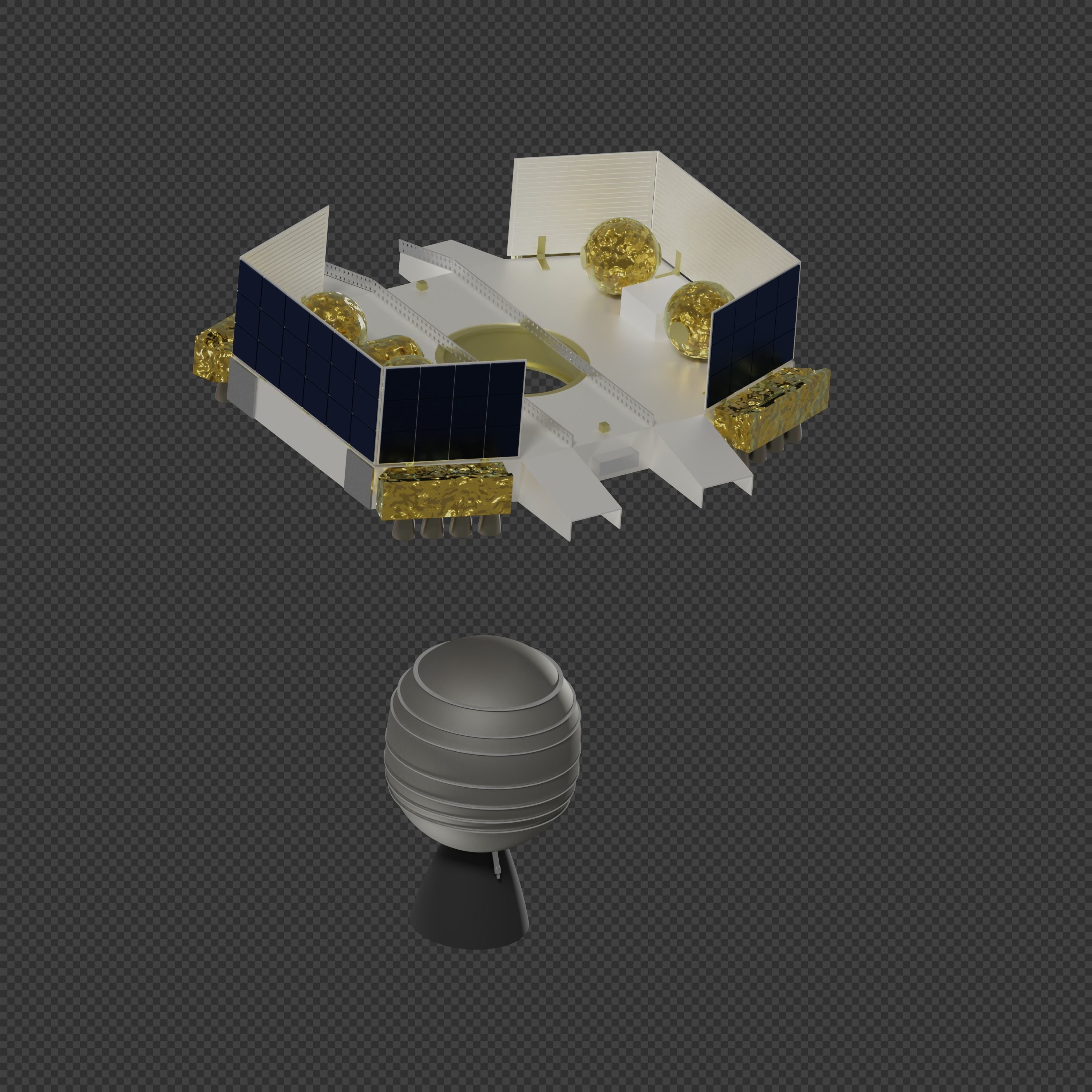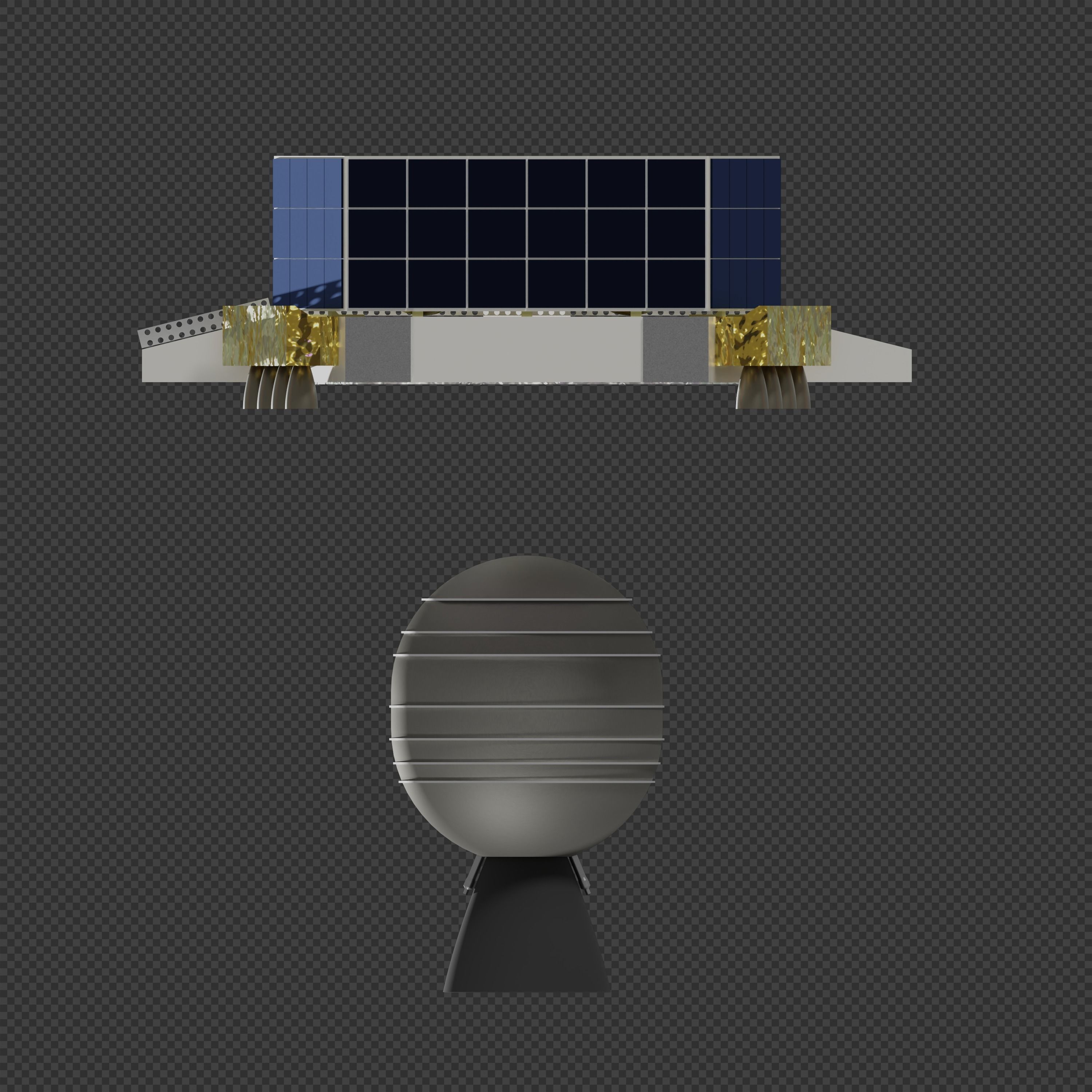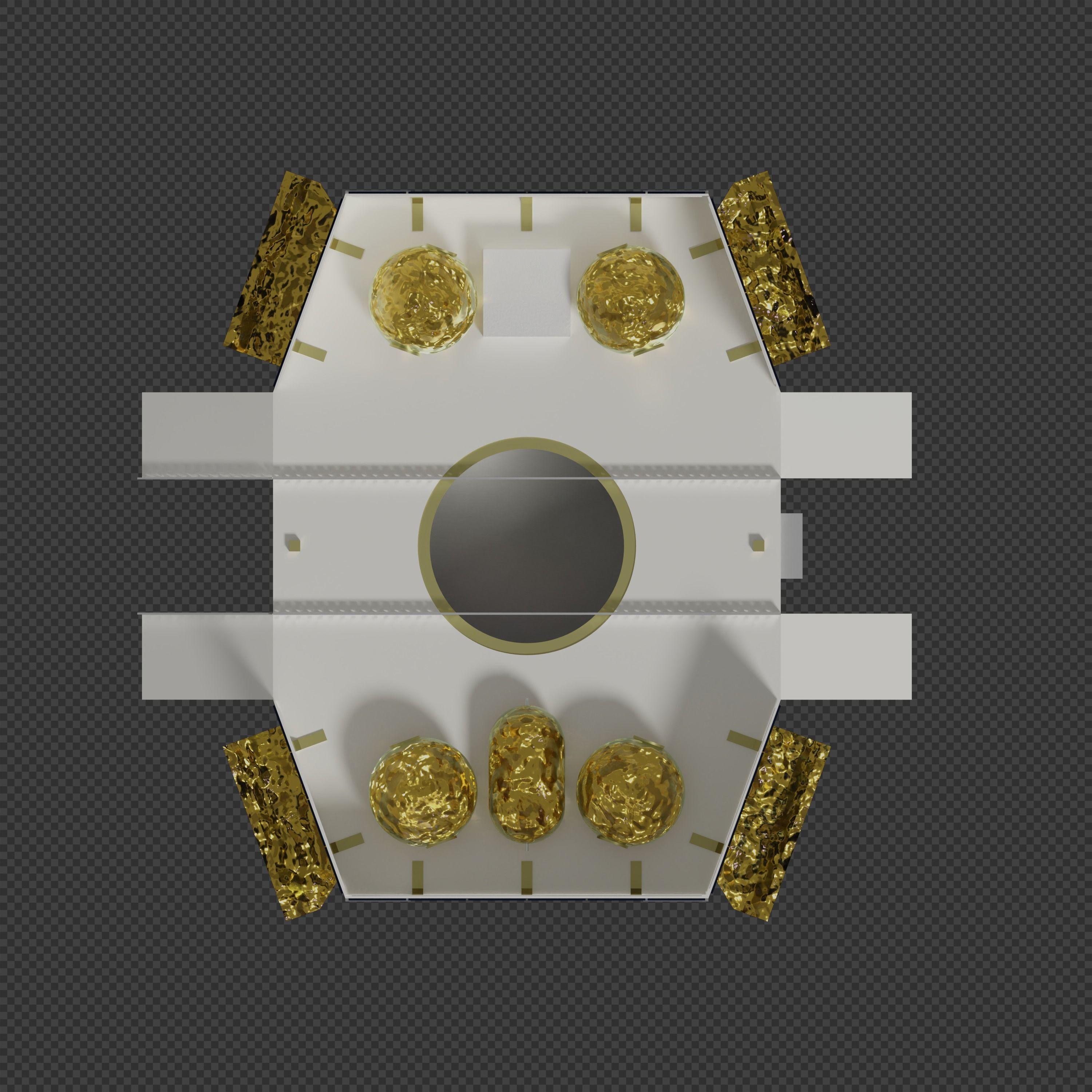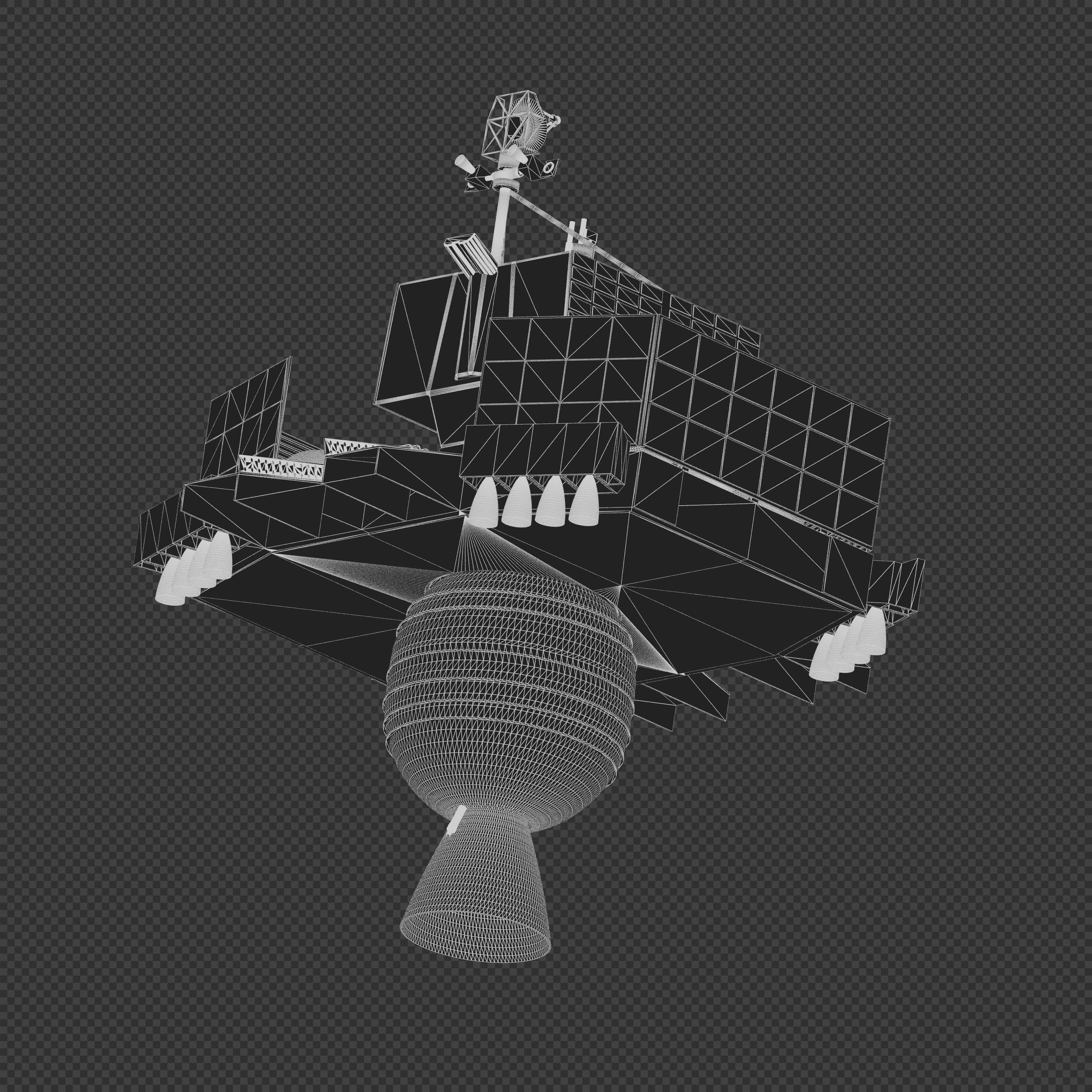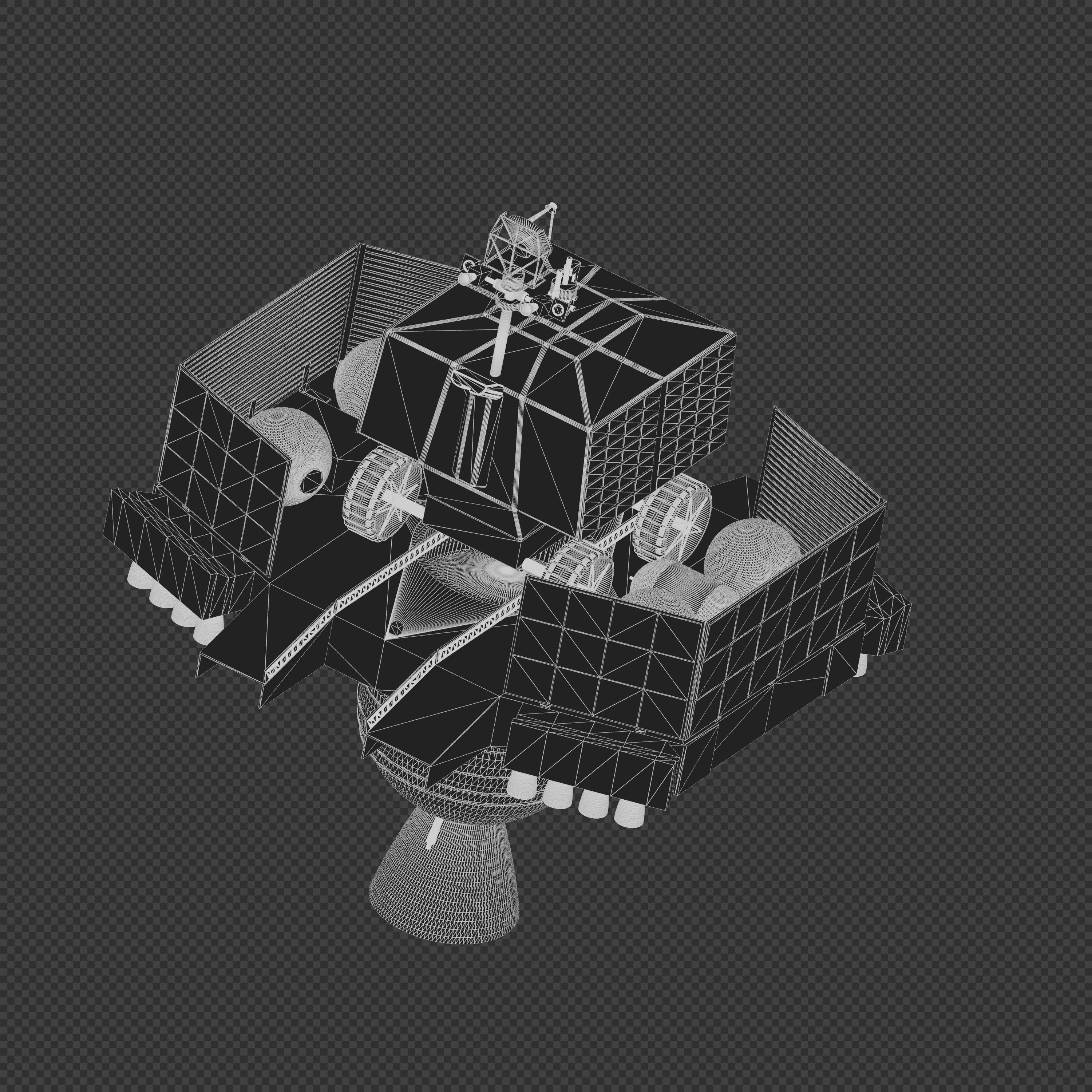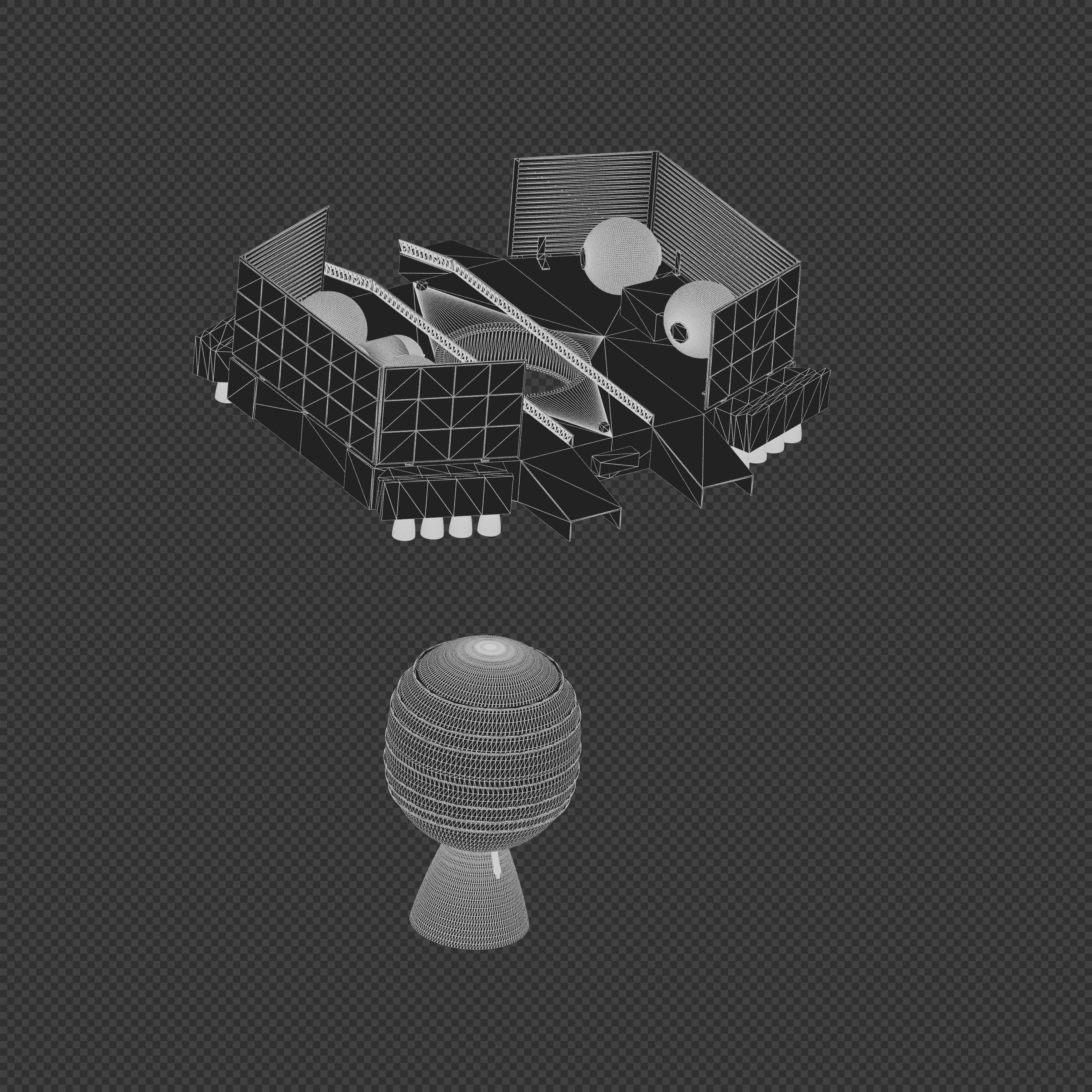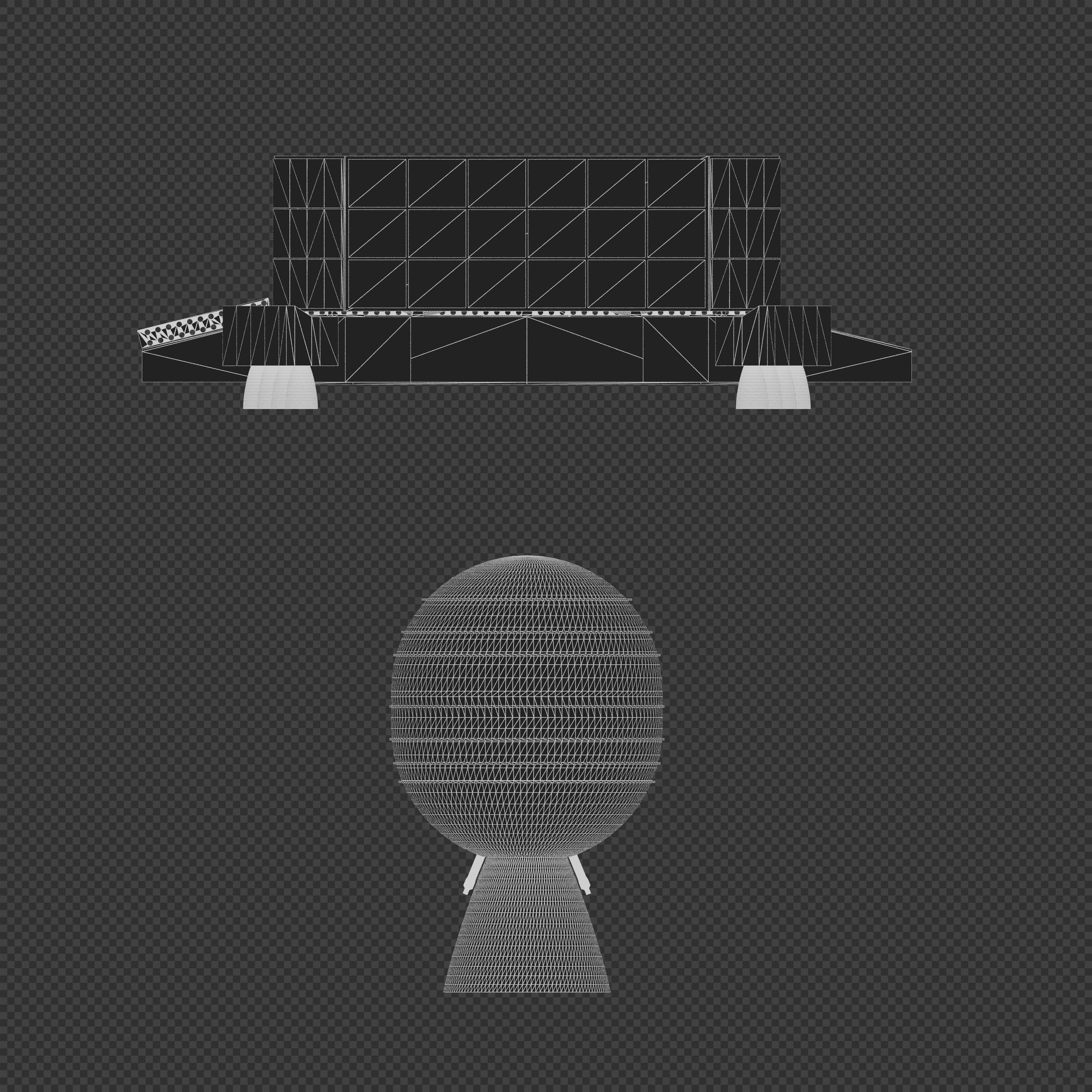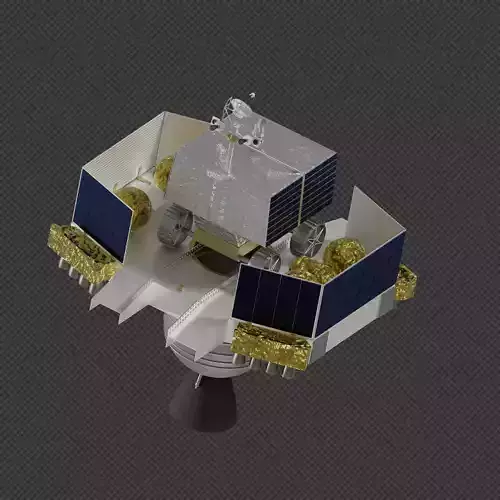
NASA Lunar Pallet Lander 3D model
Prior to the Commercial Lunar Payload Services (CLPS) program, NASA's Marshall Space Flight Center planned an in-house lunar lander for small-medium class lunar surface payloads. The proposed Lunar Pallet Lander was to deliver up to 300 kg of useful cargo, with a near-ground-level payload deck to allow easy deployment of equipment or rovers (the design driver for LPL was the Resource Prospector robotic rover, which later became the VIPER rover currently manifested for a CLPS mission). The lander itself was built around an aluminium pallet, with propellant tanks, solar arrays, and terminal descent engines bolted on. To minimize the size of propellant tanks needed on the lander (which would increase its height and complicate rover deployment), most of the braking burn would be performed by a solid-fueled Star-37 kickstage, jettisonned prior to landing. Final touchdown would then use 16 R-4D bipropellant engines
LPL is shown as configured for a polar rover-delivery mission, with vertically-oriented solar arrays
VIPER rover is shown in some preview renders purely for illustrative purposes, you can buy it separately here: https://www.cgtrader.com/3d-models/vehicle/sci-fi-vehicle/nasa-viper-lunar-rover
All materials are packed in the .blend file. Unapplied modifiers and instancing have been used to reduce file size and enable easy editing

